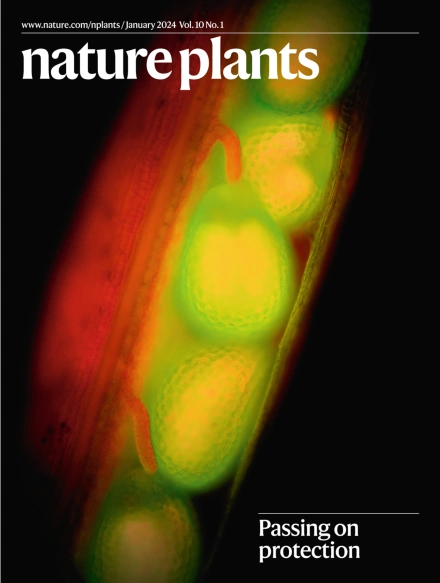Global evidence for a positive relationship between tree species richness and ecosystem photosynthesis
IF 13.6
1区 生物学
Q1 PLANT SCIENCES
引用次数: 0
Abstract
Forest biodiversity plays a critical role in sustaining ecosystem functioning and buffering the effects of increased extreme weather events on forests. A global assessment of the relationship between biodiversity and photosynthesis in natural forest ecosystems, however, remains elusive. We used a large dataset of the richness of tree species from a large number of globally distributed forest plots combined with satellite retrievals of sun-induced chlorophyll fluorescence, a novel proxy for photosynthesis, to evaluate the relationship between forest biodiversity and photosynthesis and its biological mechanisms at the global scale. We found that species richness and photosynthesis were often positively correlated at the global scale, with stronger relationships in tropical forests but weaker associations in high-latitude regions. This positive relationship was mainly driven by a larger role of species richness in increasing maximal photosynthesis than in prolonging the growing season. We also found that higher light capture by increasing the complexity of community structure was the basis of this increase in forest photosynthesis. Forests with high species richness also showed higher foliar nitrogen concentrations and the maximum rate of ribulose 1,5-bisphosphate carboxylase/oxygenase carboxylation, which are two crucial traits determining photosynthetic capacity. Our observation-based findings of ecosystem carbon uptake responses to changes in biodiversity suggest that the loss of biodiversity may jeopardize ecosystem carbon uptake and the terrestrial carbon sink, and will provide important constraints to Earth-system models. Forests with higher tree species richness show greater photosynthesis by capturing more sunlight, highlighting the essential role of biodiversity in enhancing carbon uptake and supporting the global carbon sink.


树种丰富度与生态系统光合作用正相关的全球证据
森林生物多样性在维持生态系统功能和缓冲极端天气事件增加对森林的影响方面发挥着关键作用。然而,对自然森林生态系统中生物多样性和光合作用之间关系的全球评估仍然难以捉摸。本文利用全球分布的大量森林样地的大型树种丰富度数据集,结合太阳诱导叶绿素荧光(一种新的光合作用代理)的卫星检索,在全球尺度上评估森林生物多样性与光合作用的关系及其生物学机制。研究发现,物种丰富度与光合作用在全球尺度上呈显著正相关,热带森林的相关性较强,高纬度地区的相关性较弱。这种正相关关系主要是由于物种丰富度对提高最大光合作用的作用大于延长生长季节的作用。我们还发现,通过增加群落结构的复杂性来提高光捕获是森林光合作用增加的基础。物种丰富度高的森林也表现出较高的叶片氮浓度和核酮糖1,5-二磷酸羧化酶/加氧酶羧化速率,这是决定光合能力的两个关键性状。基于观测的生态系统碳吸收对生物多样性变化的响应表明,生物多样性的丧失可能危及生态系统碳吸收和陆地碳汇,并将为地球系统模型提供重要的约束。
本文章由计算机程序翻译,如有差异,请以英文原文为准。
求助全文
约1分钟内获得全文
求助全文
来源期刊

Nature Plants
PLANT SCIENCES-
CiteScore
25.30
自引率
2.20%
发文量
196
期刊介绍:
Nature Plants is an online-only, monthly journal publishing the best research on plants — from their evolution, development, metabolism and environmental interactions to their societal significance.
 求助内容:
求助内容: 应助结果提醒方式:
应助结果提醒方式:


